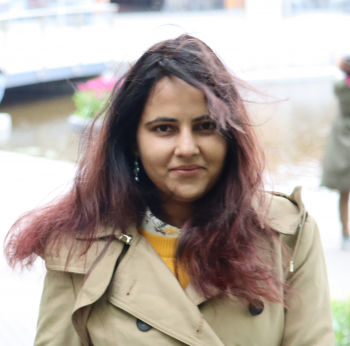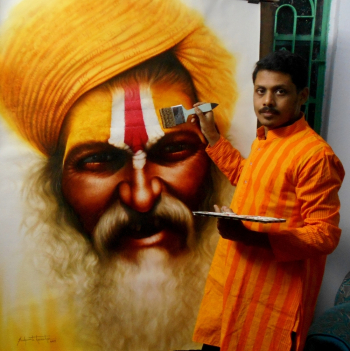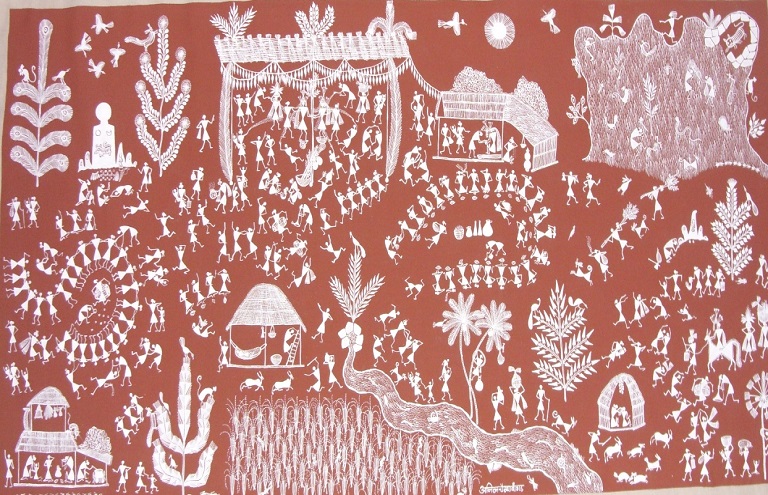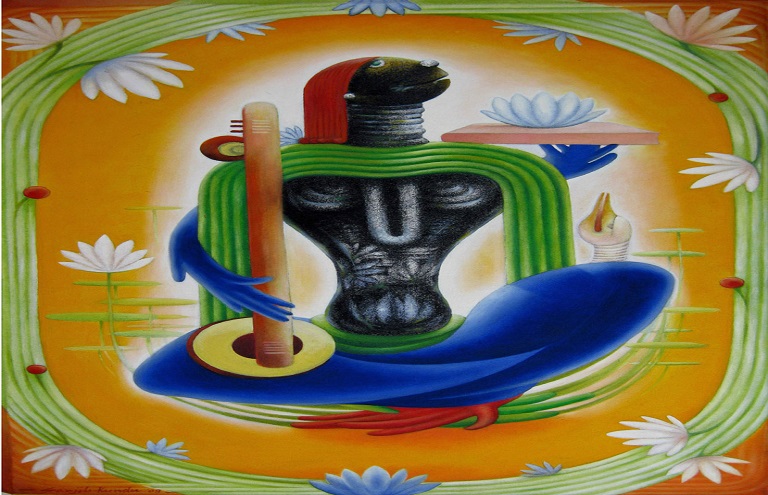
The rich social variety of India is very much reflected in the striking, particular, and charming people who hold Indian art paintings or the ones who are artists themselves. Different artwork styles are predominant across different areas, each addressing customs, traditions, and philosophies given from one age to another. Generally, the vast majority of the Indian canvas styles existed as divider compositions or paintings.
At the appropriate time of time, urbanization brought these works of art shapes on paper, material, and fabric, and so on Indian art paintings are an impression of the native way of life as well as an ideal illustration of imaginative articulation through basic yet particular synthesis.
Here is a portion of the mainstream Indian art paintings styles -
-
Madhubani Paintings
Perhaps the most commended style of Indian art paintings is Madhubani which began in the Mithila locale of Bihar as a type of divider art. This craftsmanship style was obscure to the rest of the world until found by the British frontier William G. Bowman in 1934 while investigating the harm after the huge Bihar quake. Bowman was astonished by the wonderful delineations on the uncovered inside dividers of the houses.
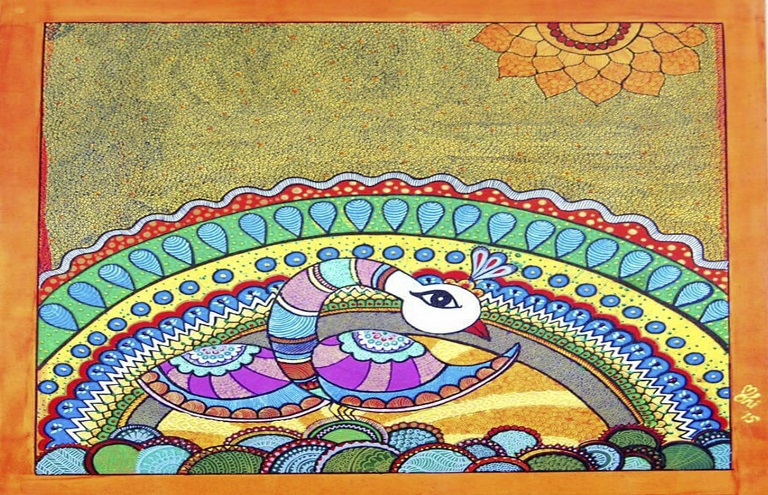
The excellence of Madhubani lies in its straightforward and suggestive depiction of culture and customs. The plans are portrayed by eye-getting mathematical examples, emblematic pictures, and scenes from folklore. The harmony between the liveliness of tones and effortlessness in its examples make Madhubani unique in relation to other works of art styles. Bharni, Katchni, Tantrik, Godna, and Kohbar are the five particular styles of Madhubani painting.
-
Warli Paintings
The 2500-year-old practice of Warli canvases of the Thane and Nasik spaces of Maharashtra are firmly connected with nature and social ceremonies of the clan. Warli works of art feature day-by-day exercises of the nearby individuals of that local area like cultivating, moving, chasing, imploring, and so forth generally, ladies utilized twigs to draw enthusiastic plans with rice glue on mud dividers of ancestral houses to stamp festivities of harvests or weddings.
Straightforward mathematical examples in white against a red or yellow surface are utilized to portray regular daily existence scenes. Warli craftsmanship with its straight and monochromatic tones takes after the execution of pre-memorable cavern artistic creations.
-
Kalighat Painting of Bengal Pat
The Kalighat painting style was created around the Mid-nineteenth century in the neighborhood of Kali Temple in Calcutta. These drawings on paper were finished by a gathering known as "patuas" thus the name Kalighata Pata. They portrayed scenes of regular daily existence and fanciful gods in a straightforward yet enthralling way and formed into the mainstream kali ghat way of painting.
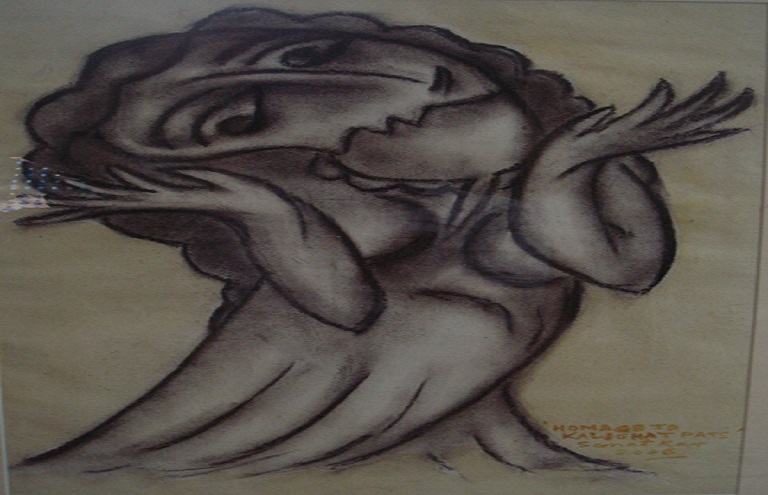
Kalighat painters prevalently utilize gritty Indian tones like indigo, ochre, Indian red, dim, blue, and white. The quick, consistent, free-streaming layout is a recognized quality of the Kalighat style of artwork. This work of art style has enlivened numerous specialists, the most popular being Jamini Roy.
-
Phad
Phad is the account scroll painting custom from Rajasthan, tracing back to 1,000 years. Accounts of nearby divinities and saints are painted on flat material looks in tones of red, yellow, and orange The Phad scrolls show portrayals of combat zones, experience stories, amazing sentiments, and the extravagance of the Indian royal states. The Phad painting style leaves one entranced at how the society specialists oblige numerous accounts in a solitary creation, yet keep up with the feel of imaginative articulation.
-
Kalamkari
This 3000-year-old natural specialty of hand and square printing was generally utilized for making story parchments and boards. This impeccable people's workmanship has a solid interface with Persian themes. Kalamkari gets its name from kalam or pen and is a heritage that has been given over from one age to another in Andhra Pradesh. The stylized creature structures, botanical themes, and mehrab plans overwhelming in Kalamkari works of art have likewise discovered a spot in Kalamkari materials. Kalamkari principally includes hearty shadings like indigo, green, rust, dark, and mustard.
-
Small scale Painting
The Miniature canvas style came to India with the Mughals in the sixteenth century and is recognized as a significant achievement throughout the entire existence of Indian craftsmanship. It formed into a particular style with a blend of Islamic, Persian, and Indian components. The canvas is finished utilizing normal stone tones on a paper-based "was". Mineral tones, valuable stones, conch shells, gold, and silver are utilized in the miniatures. Fine brushwork, unpredictability, specifying, and stylization are the one-of-a-kind credits of small-scale painting. Across India, the scaled-down painting style has formed into unmistakable schools of smaller than normal compositions like Kangra, Rajasthan, Malwa, Pahadi, Mughal, Deccan, and so forth to give some examples.
-
Gond Painting
These energetic compositions made with a progression of unpredictably orchestrated dabs and runs were created by the Gondi clan of focal India. The tribals reproduce fanciful stories and oral narratives to conventional tunes, regular environmental factors, significant occasions, and ceremonies with incredible multifaceted nature, rich specifying, and splendid tones. Generally, colors were gotten from normal assets like cow excrement, plant sap, charcoal, shaded soil, mud, blossoms, leaves, and so forth.
Gond craftsmen presently utilize business water-put together shadings to paint concerning paper and material. In the present occasions, Gond craftsmanship has moved past being an ancestral workmanship style with anonymous specialists to having universally acclaimed craftsmen like Jangarh Singh Shyam, Venkat Shyam, Bhajju Shyam, Durga Bai Vyam to give some examples.
-
Kerala Murals
The energetic Kerala wall painting canvases are one of the world's most popular frescos and have profound otherworldly roots portraying subjects of Hindu folklore, legends, the exemplary skips of Krishna just as the spiritualist types of Siva and Shakti. They additionally describe some amazing saints of the past. This customary workmanship style dates to the seventh and eighth century AD and is described by fiery symbolism, intense strokes, and distinctive shadings. Ochre-red, yellow-ochre, somewhat blue-green, white, and unadulterated shadings are dominatingly utilized in Kerala wall painting.
-
Patachitra
Patachitra is the material parchment painting custom from Odisha, devoted to fanciful and strict topics. Striking, solid frameworks, lively tones like white, red yellow, and dark with beautiful lines are a portion of the attributes of patachitra painting style, that is appreciated by workmanship sweethearts across the world.
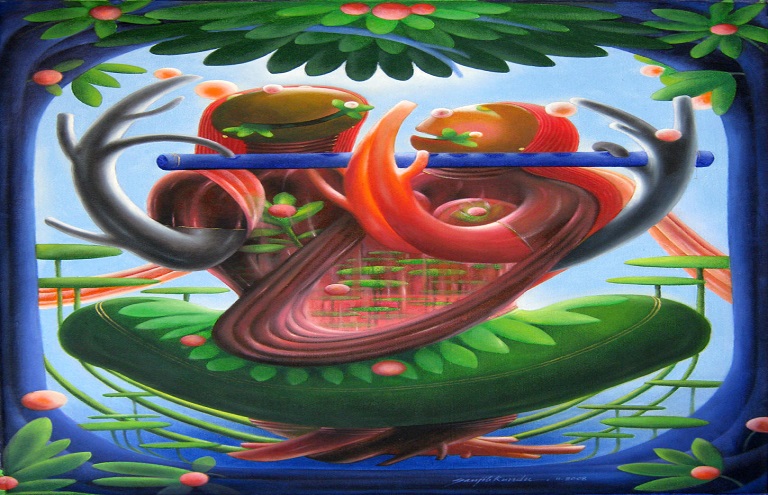
Pichwai
The specialty of Picchwai began as inside decorations behind the primary divinity in Krishna sanctuaries in Nathdwara. They describe stories identified with Lord Krishna. Progressively with commercialization common subjects are likewise fused in the Picchwai way of painting. Picchwais are brilliant and many-sided masterpieces with covered imagery in the imaginative themes. This particular reverential craftsmanship practice has passed starting with one age then onto the next and is a fine illustration of otherworldliness in workmanship.
Read More: 7 Female Madhubani Artists you should know About
Wrapping Up:
While the country we live in is diversified in religion, languages, and color- holding on to a set of Indian art paintings is a moment of success. While we all get involved in the idea of oneness- a house full of versatile paintings is a must!












